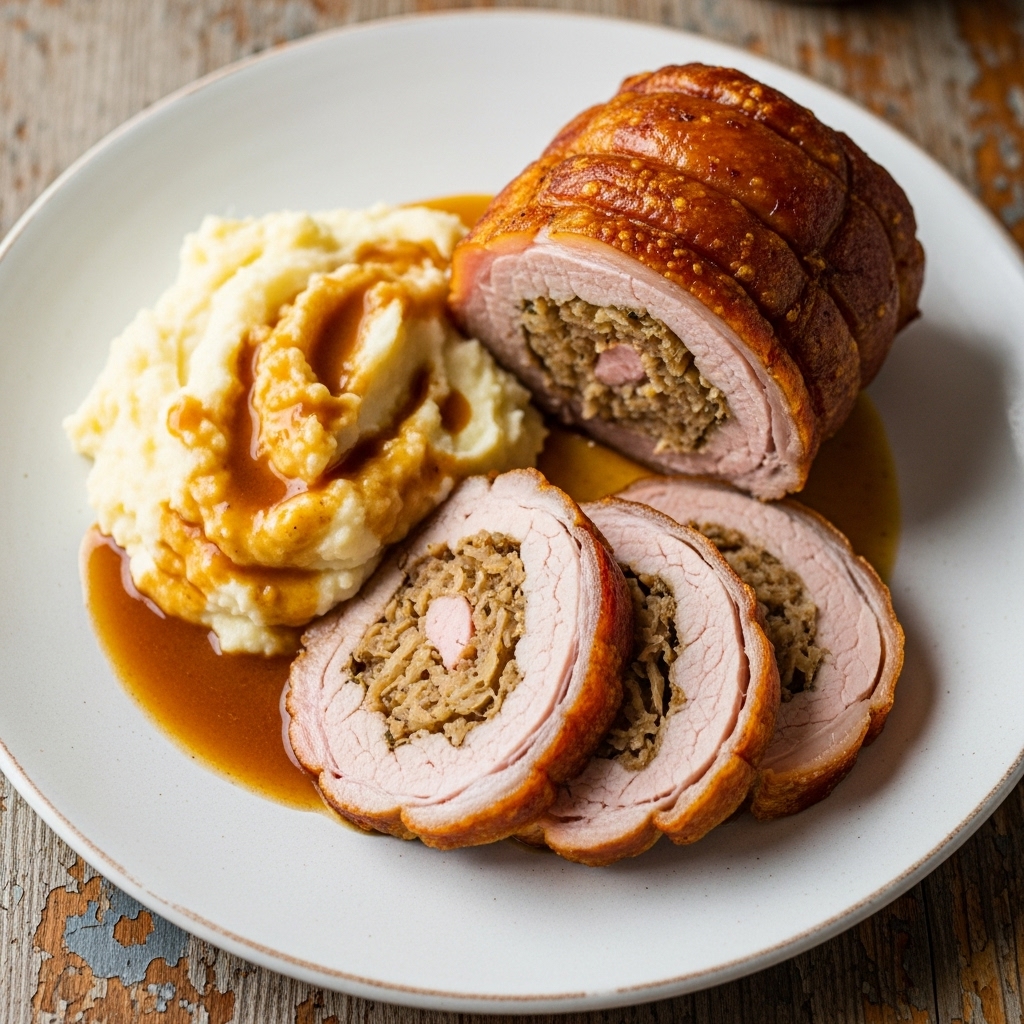
Succulent Paleo German-Inspired Roast Pork Loin with Apple-Sauerkraut Stuffing and Creamy Mashed Rutabaga
Discover this mouthwatering, gourmet paleo German-inspired roast pork loin recipe with apple-sauerkraut stuffing and creamy mashed rutabaga. Perfect for a special dinner or entertaining guests, this dish is both rich in flavor and gluten-free, dairy-free.
Allergens
Gluten-free, Dairy-free
Ingredients
- 4 lbs boneless pork loin
- 2 cups sauerkraut, rinsed and drained
- 2 apples, peeled, cored, and chopped
- 1 tbsp olive oil
- Salt and pepper, to taste
- 4 medium rutabagas, peeled and diced
- 1 cup unsweetened almond milk
- 4 cloves garlic, minced
- 2 tbsp fresh parsley, chopped
Instructions
- Preheat oven to 375°F (190°C).
- In a large bowl, combine sauerkraut and apples season with salt and pepper.
- Cut a horizontal slit into the pork loin, creating a pocket for the stuffing. Stuff the pork loin with the apple sauerkraut mixture, then tie with kitchen twine to secure.
- In a large skillet, heat olive oil over medium heat. Sear the pork loin on all sides until browned, approximately 3 minutes per side.
- Transfer the seared pork loin to a roasting pan and roast in the preheated oven for 1 hour or until internal temperature reaches 145°F (63°C). Let rest for 10 minutes before slicing.
- While the pork loin is resting, prepare the mashed rutabaga: In a large pot, boil the diced rutabagas until tender, about 20 minutes. Drain and return to the pot. Add almond milk, garlic, and salt and pepper mash until creamy. Fold in parsley.
- Slice the rested pork loin and serve alongside the apple sauerkraut stuffing and mashed rutabaga.
Chef’s Insight
The key to a tender and juicy roast is proper temperature control during searing and cooking.
Notes
Serve with a crisp German white wine for a complete dining experience.
